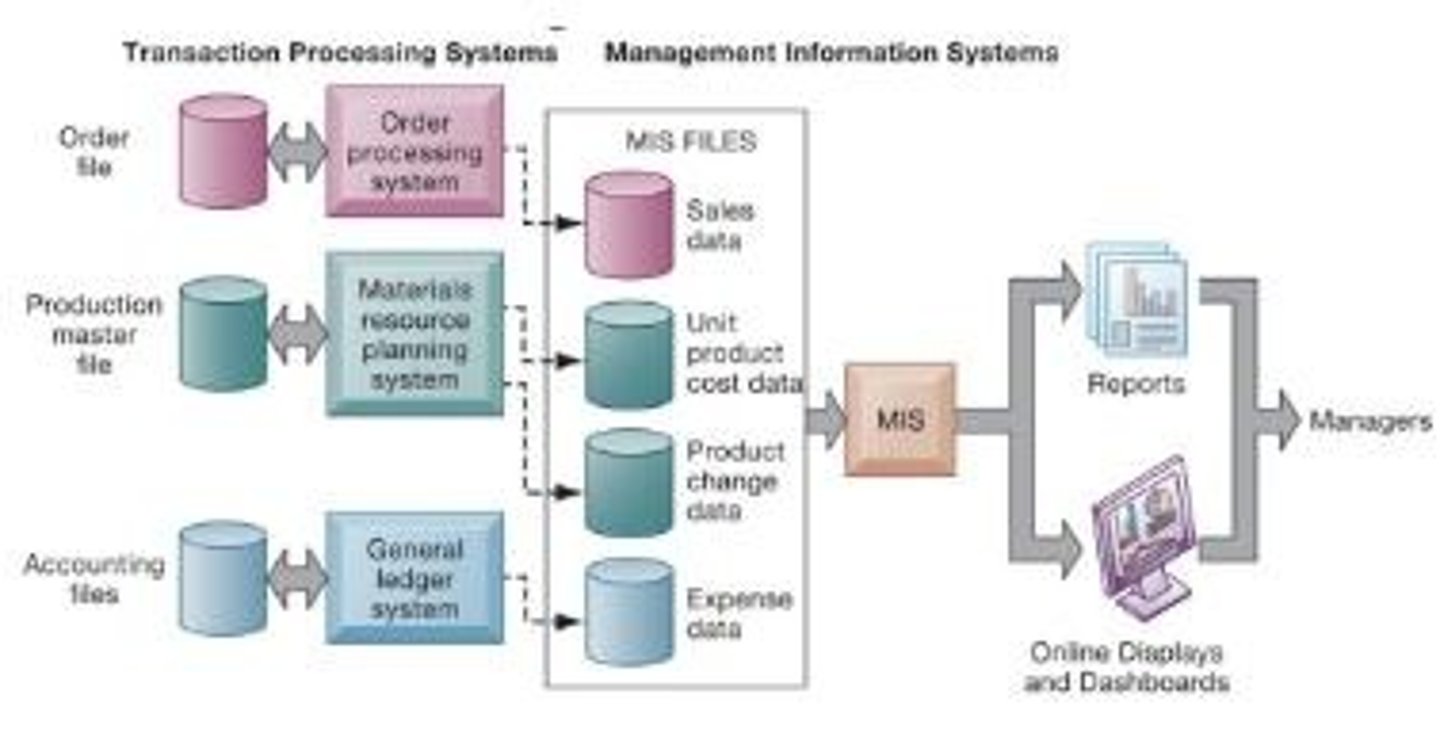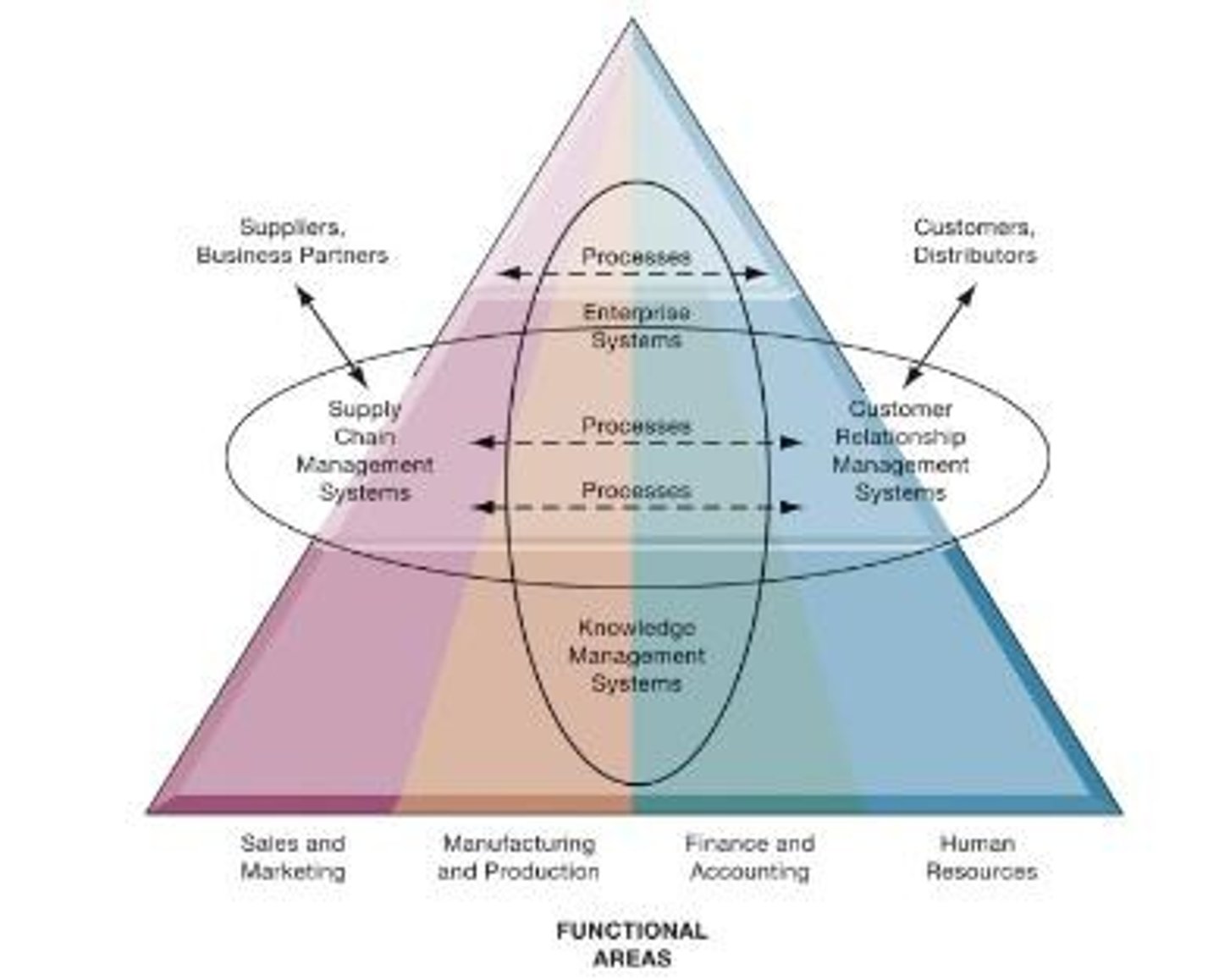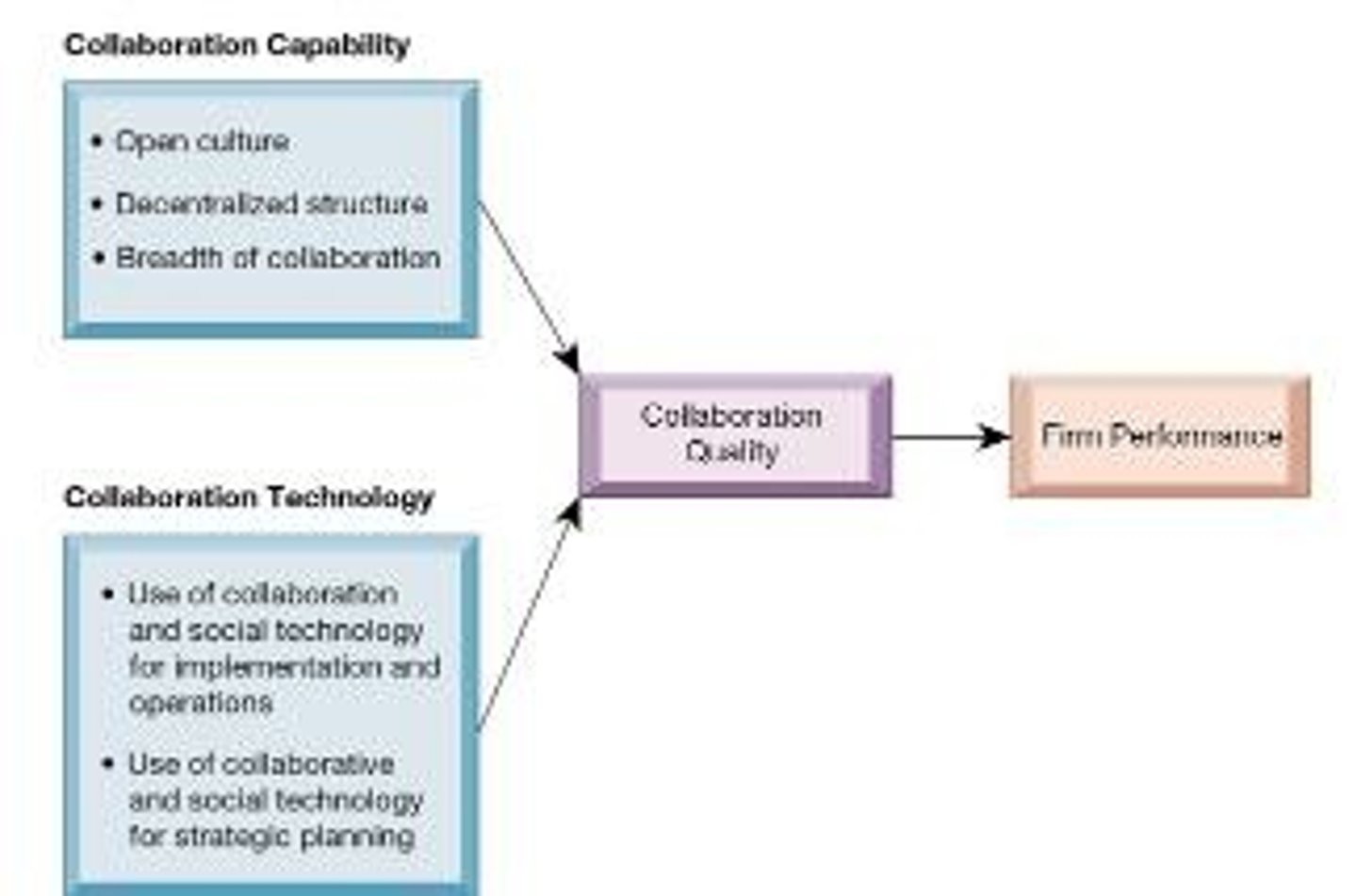ITM102 Chapter 2: Global E-Business and Collaboration
1/84
There's no tags or description
Looks like no tags are added yet.
Name | Mastery | Learn | Test | Matching | Spaced |
|---|
No study sessions yet.
85 Terms
Information Systems Technology
Enhances competitive advantage and operational efficiency.
Operational Excellence
Improvement of processes for better performance.
Business Processes
Flows of material and information within organizations.
Functional Business Processes
Activities specific to departments like finance or HR.
Cross Functional Processes
Processes that span multiple departments or functions.
Transaction Processing Systems (TPS)
Record daily transactions for operational management.

Business Intelligence (BI)
Analyzes data to support informed decision-making.
Management Information Systems (MIS)
Reports on current performance for middle management.
Decision Support Systems (DSS)
Supports non-routine decision-making with data.
Executive Support Systems (ESS)
Assists senior management with strategic decisions.
Enterprise Applications
Link systems across functional areas in organizations.

Enterprise Resource Planning (ERP)
Centralizes data from various business functions.
Supply Chain Management (SCM)
Manages relationships with suppliers and logistics.
Customer Relationship Management (CRM)
Coordinates business processes related to customers.
Knowledge Management Systems (KMS)
Captures and applies organizational knowledge and expertise.
Intranets
Internal websites accessible only to employees.
Extranets
External websites for vendors and suppliers access.
E-Business
Digital technology driving major business processes.
E-Commerce
Buying and selling goods via the internet.
E-Government
Internet technology for delivering services to citizens.
Collaboration
Working together to achieve shared goals.
Social Business
Using social media for business interactions.
Decision Making
Choosing among alternatives based on information.
Efficiency
Maximizing output while minimizing input.
Automation
Using technology to perform tasks without human intervention.
Data Repository
Central location for storing data.
Customer Service
Support provided to customers before, during, and after purchase.
Marketing
Activities to promote and sell products or services.
Human Resources
Department managing employee-related functions.
Sales
Activities related to selling products or services.
Financial Statements
Reports summarizing financial performance.
Product Delivery
Process of transporting goods to customers.
Information Flow
Movement of information within and between organizations.
Social Business
Engagement through social networking platforms.
Information Transparency
Openness in sharing information within organizations.
Operational Efficiency
Improved productivity through streamlined processes.
Collaboration Technology
Tools that enhance teamwork and communication.

Productivity Benefits
Increased output from knowledge sharing.
Quality Improvement
Faster resolution of quality-related issues.
Innovation Generation
More ideas for products and services.
Customer Service Efficiency
Rapid handling of customer complaints.
Financial Performance
Results from improved collaboration and service.
Collaborative Culture
Environment that values teamwork and participation.
Command and Control Structure
Top-down management with little employee input.
Team Reliance
Managers depend on teams for decision-making.
Collaboration Tools
Technologies that facilitate teamwork and communication.
Email and IM
Basic tools for instant communication.
Wikis
Collaborative platforms for information sharing.
Virtual Meeting Systems
Online platforms for remote collaboration.
Cloud Collaboration Services
Web-based tools for team projects.
Market Leadership
Dominance in a specific industry sector.
Loblaw Market Share
29% of Canadian grocery retail sector.
Revenue (2023)
Loblaw's revenue reached 60 billion dollars.
Profit Margin
31% profit margin in 2023.
Share Price Growth
Increased from $89 in 2021 to over $170.
AI Utilization
Using AI to enhance customer experiences.
PC Optimum Program
Loyalty program utilizing customer data.
E-Commerce Revenue
Generated 3.3 billion in 2023.
PC Health App
Integrates health services with loyalty programs.
Global Competitors Challenges
Need to leverage digital technologies for competitiveness.
Ethical Considerations
Concerns over privacy in data usage.
Customer Engagement
Improving interactions through personalized recommendations.
AI Capabilities
Innovative technologies enhancing customer personalization.
PC Optimum
Loyalty program providing unique customer data.
Competitive Advantage
Unique strengths differentiating Loblaw from competitors.
E-commerce Strategy
Integrated online and offline shopping experiences.
Omnichannel Strategy
Combining physical stores with digital sales.
Hyper-personalization
Tailored experiences based on customer data.
Market Necessity
Essential technologies for survival in competitive markets.
Customer Loyalty Programs
Initiatives to enhance customer retention and engagement.
Local Market Knowledge
Understanding regional customer preferences and needs.
Health Data Integration
Combining grocery and health information for better services.
Ethical Considerations
Moral implications of using customer data.
Customer Behavior Insights
Understanding purchasing patterns for targeted marketing.
Same-Day Pickup
Quick fulfillment option for online grocery orders.
Digital Ecosystem
Comprehensive online platform for customer engagement.
Transparency in Data Practices
Clear communication about data usage and privacy.
Customer Retention
Strategies to keep customers engaged with Loblaw.
Robust Privacy Protections
Measures to safeguard customer information.
Loblaw's Differentiation
Unique offerings setting Loblaw apart from rivals.
Integration Benefits
Enhanced customer experience through combined services.
Loblaw's Profitability
Increased revenue from customer loyalty and data use.
Digital Investment
Funding for technology to enhance competitive position.
Competitor Response
Actions taken by rivals to match Loblaw's capabilities.
Grocery and Pharmacy Services
Combined offerings for convenience and customer satisfaction.